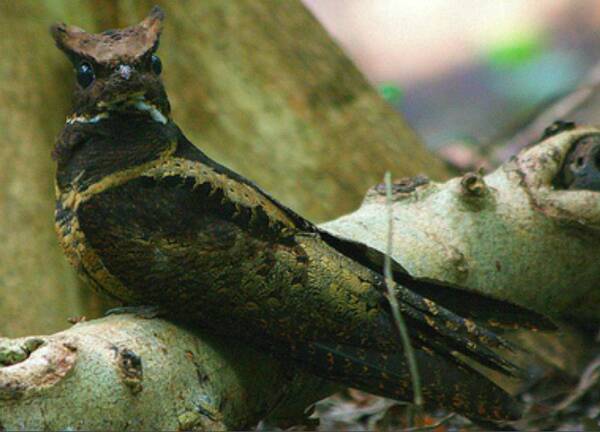
The hairy-legged nightjar is a medium-sized bird of the family Viperidae and the genus Viperidae. It often moves alone or in pairs. It is the largest species of nightjar in China and the only one with ear feather tufts. It is nocturnal and often crouches on the grass in the forest or lies on the dar...
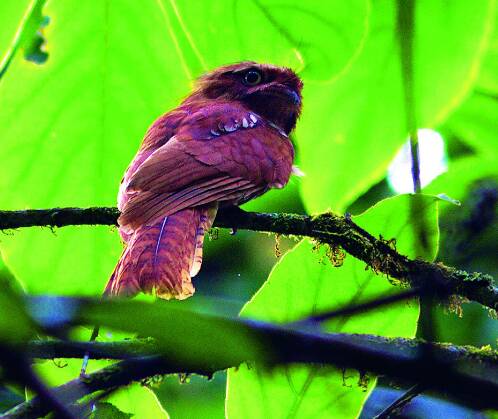
The black-capped frogmouth is a small bird. It is similar in shape to a nighthawk. It often moves alone or in pairs. It is nocturnal and hides in dense forests during the day, lying or standing on horizontal branches along the trunks of large trees. Because its body color is similar to that of branc...
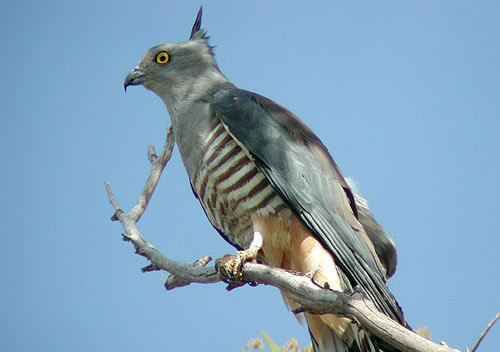
The Black-crowned Bazaar is a small to medium-sized bird of prey with four subspecies.The Black-crowned Bazaar often moves alone, sometimes in small groups of 3-5 or so. It often soars and hovers over the forest, occasionally flapping its wings and flying. It is very leisurely, and sometimes it move...
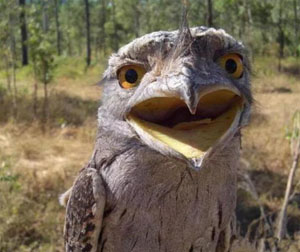
The body shape of the Black-capped Frogmouth is similar to that of a nighthawk. However, the beak is wide, and the upper beak is very curved with a hooked tip. The whiskers on the forehead and head are very developed, and the nostrils are covered by whiskers, which distinguishes it from birds of the...
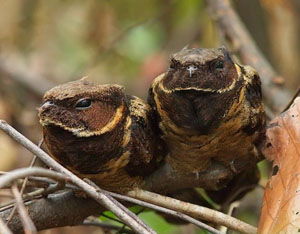
The hairy-legged nightjar is a medium-sized bird of the family Viperidae and genus Viperidae. It has dark brown horizontal stripes on its body, very conspicuous ear feathers, and a yellow-brown crown, which is lighter than the rest of the head. The top of the head is sandy yellow with very fine blac...
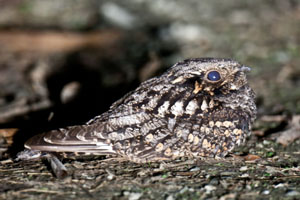
Common nighthawk is a resident bird in Tibet, China, and a summer migratory bird in other places. It moves alone or in pairs. It is nocturnal, and it often crouches on the grass in the forest or lies on the dark tree trunks during the day, hence the name "sticking to the bark". Because its...
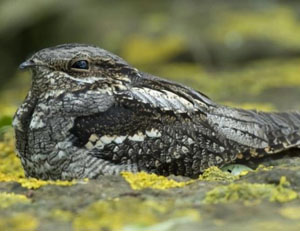
The European Nightjar was formerly known as the goatsucker because farmers believed that the bird sucked goat's milk at night. Its broad beak is a reflection of this legend. In reality, the short, broad beak is used to catch prey such as moths at night.The plumage of an adult European Nightjar i...
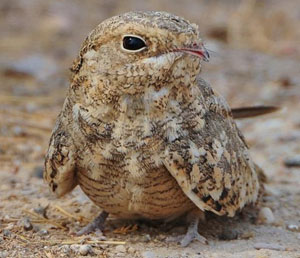
The Egyptian Nightjar is a small bird of the family Viperidae and the genus Viper. It looks very similar to the European Nightjar, but its body color is lighter. The upper body is mostly light gray, sandy gray or leathery gray, with less obvious dark spots. The throat is white, and the white spots o...

The long-tailed nighthawk lives in evergreen broad-leaved forests, shrubs, scrub belts, mangroves, savannas and wetlands. During the day, it often crouches in dense forests or grasslands, and is sometimes seen standing on rocks by the roadside. Because of its small claws, it often moves by jumping o...

Turtle shells and hawksbill shells differ primarily in the animals they refer to and the characteristics of the shells: Turtle Shell: Turtles are a type of reptiles that live in the ocean. Their shells are usually flat and smooth. In order to reduce hydrodynamic forces, th...